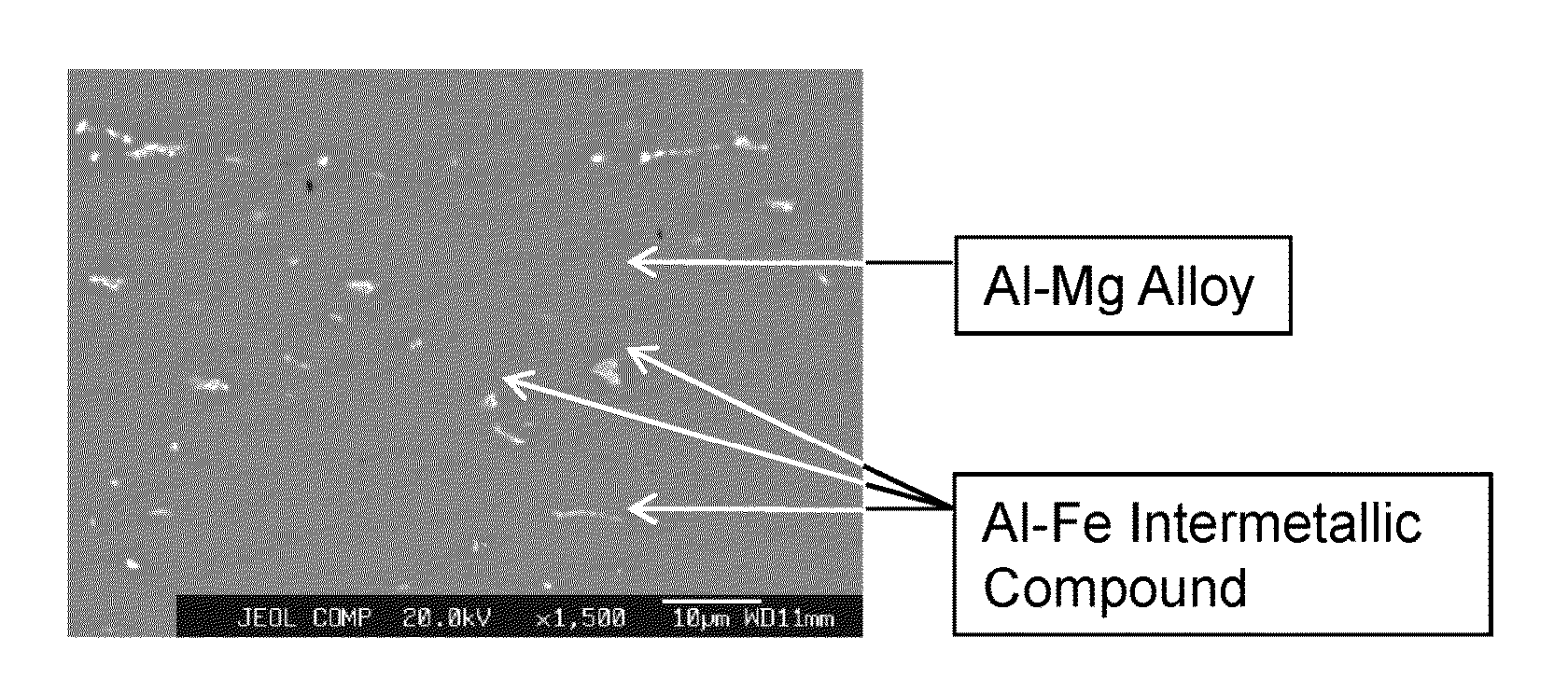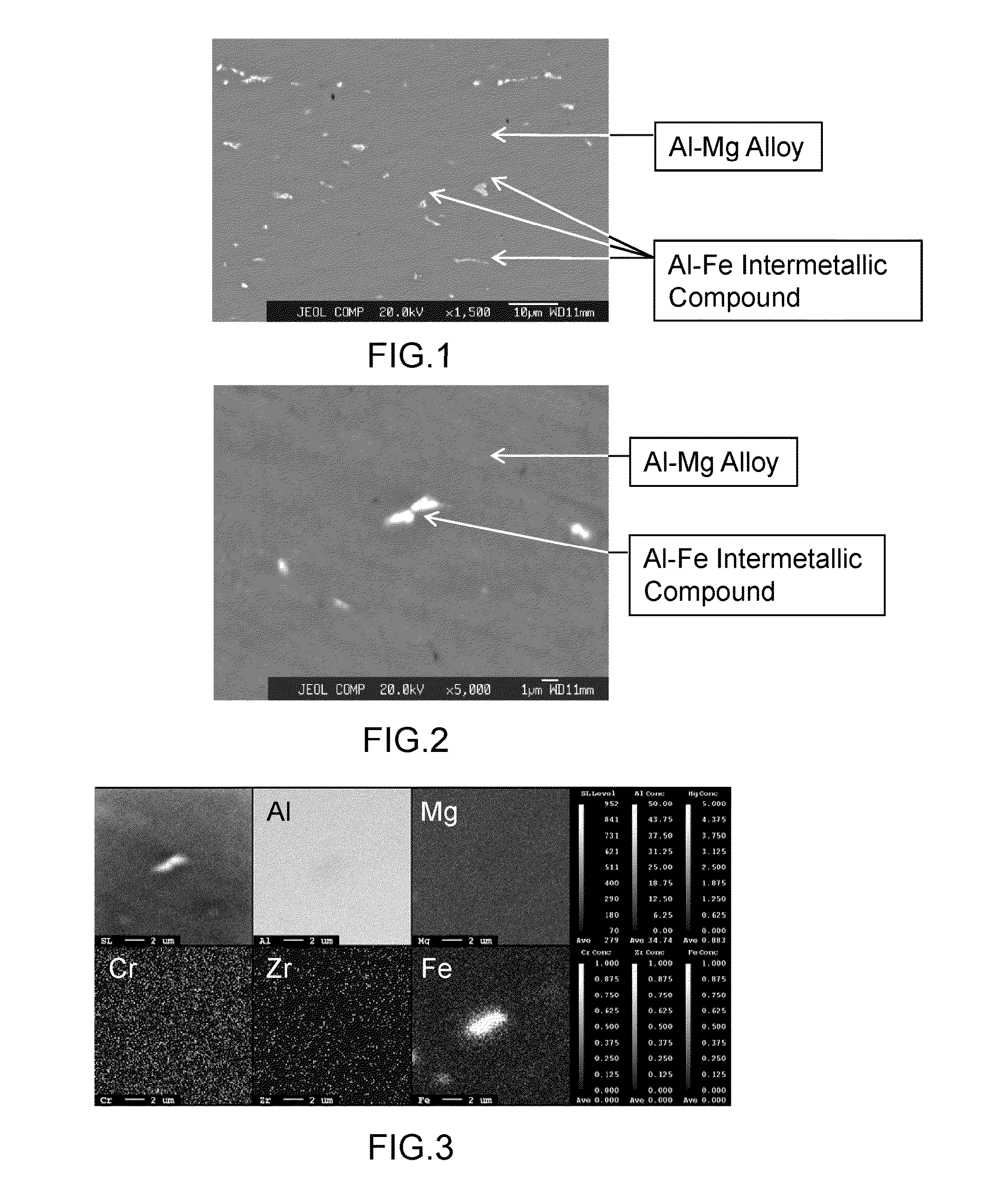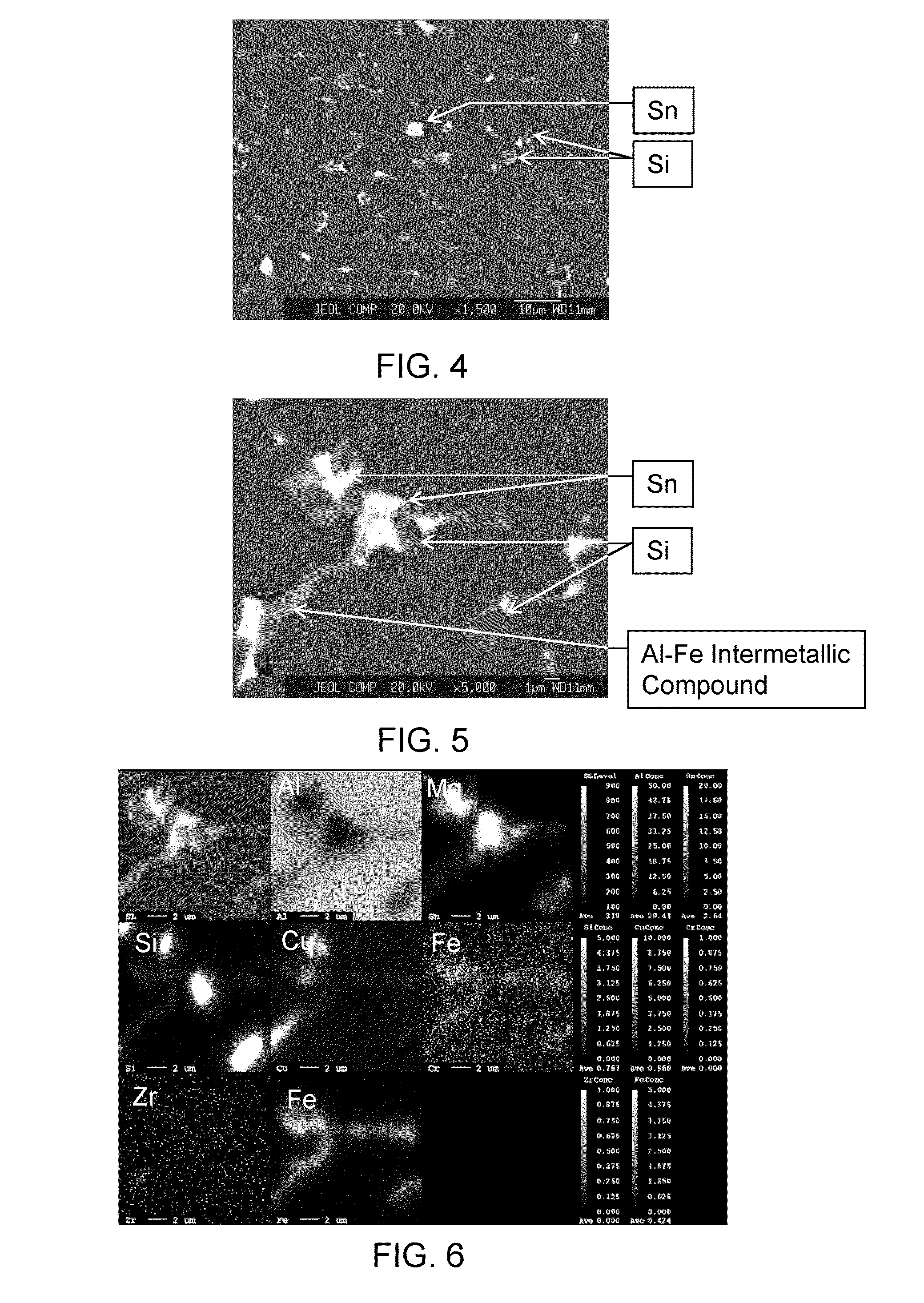Aluminum alloy for plain bearing, plain bearing and production method for the bearing
a technology of lubricating oil and alloy, which is applied in the direction of metal layered products, pretreatment of surfaces, metal material coating processes, etc., can solve the problem of thin thickness of lubricating oil film, and achieve the effect of lessening strength reduction, reducing solute amount, and increasing tensile strength
- Summary
- Abstract
- Description
- Claims
- Application Information
AI Technical Summary
Benefits of technology
Problems solved by technology
Method used
Image
Examples
example 1
[0064]Aluminum alloys, whose compositions are shown in Table 1, were continuously cast into sheets having a thickness of 15 mm. These sheets were cold rolled to a thickness of 6 mm. Low temperature heat treatment was carried out as shown in Table 1, followed by cold rolling to a thickness of 1 mm. High temperature heat treatment was carried out as shown in Table 1. The aluminum-alloy rolled sheets obtained by the above process were subjected to measurement of tensile strength at room temperature and 200 degrees C. The results are shown in Table 1. Table 1 shows the strength of a alloys having various components, as measured at room temperature and high temperature.
TABLE 1LowHighTensileTemperatureTemperatureStrengthComponents ofHeatHeat(MPa)SampleBearing Alloy (mass %)TreatmentTreatMentRoomNo.AlMgCrZrCuSnSi(° C.)(° C.)Temperature200° C.1Bal30.20.15———3504202501552Bal30.10.1———3604502401403Bal30.20.2———3504102551634Bal30.150.1———3504202151485Bal50.20.15———3504203201956Bal50.10.15———35...
example 2
[0074]An aluminum alloy having the composition of No. 5 in Table 1 was continuously cast cold rolled, low-temperature heat-treated as shown in Table 1, further rolled, and then high-temperature heat treated as shown in Table 1, in the same manner as in Example 1. The thus-prepared aluminum-alloy sheet was bonded to a backing metal (2.6 mm thick SPCC) provide a bimetal (bearing material). For comparative examples, alloys having composition of Nos. 12 and 13 were also bonded to a backing metal. These bimetals were shaped into the form of a bearing and subjected to a fatigue test under the following conditions.
[0075]Test Conditions
[0076]Tester: cyclic dynamic load tester
[0077]Temperature of fed oil: 160 degrees C.
[0078]Test surface pressure: 78-100 MPa
[0079]Lubricating oil: SAE 10W-30
[0080]Material of shaft: high frequency quenched S55C
[0081]As is apparent from the graph of FIG. 10, which shows the test results, the fatigue-generating surface pressure of the inventive Example 5 is high...
example 3
[0082]The test material was the same as the product of inventive Example 2 and was surface-roughened by either pickling (for example, by use of a phosphate compound) or mechanically (for example, by shot-blasting or the like). MoS2 and PAI (polyamide-imide) were blended to prepare a mixture, which was applied to the roughened surface followed by baking at 220 degrees C. The thus-prepared bearing with an overlay was subjected to a fatigue test under the same conditions as in Example 2. FIG. 11 ascertains improved fatigue resistance. When Comparative Example No. 12 is provided with an overlay, the overlay was effective for enhancing fatigue resistance. However, fatigue resistance of No. 5 without an overlay is more improved.
PUM
| Property | Measurement | Unit |
|---|---|---|
| thick | aaaaa | aaaaa |
| thickness | aaaaa | aaaaa |
| thickness | aaaaa | aaaaa |
Abstract
Description
Claims
Application Information
 Login to View More
Login to View More - R&D
- Intellectual Property
- Life Sciences
- Materials
- Tech Scout
- Unparalleled Data Quality
- Higher Quality Content
- 60% Fewer Hallucinations
Browse by: Latest US Patents, China's latest patents, Technical Efficacy Thesaurus, Application Domain, Technology Topic, Popular Technical Reports.
© 2025 PatSnap. All rights reserved.Legal|Privacy policy|Modern Slavery Act Transparency Statement|Sitemap|About US| Contact US: help@patsnap.com



